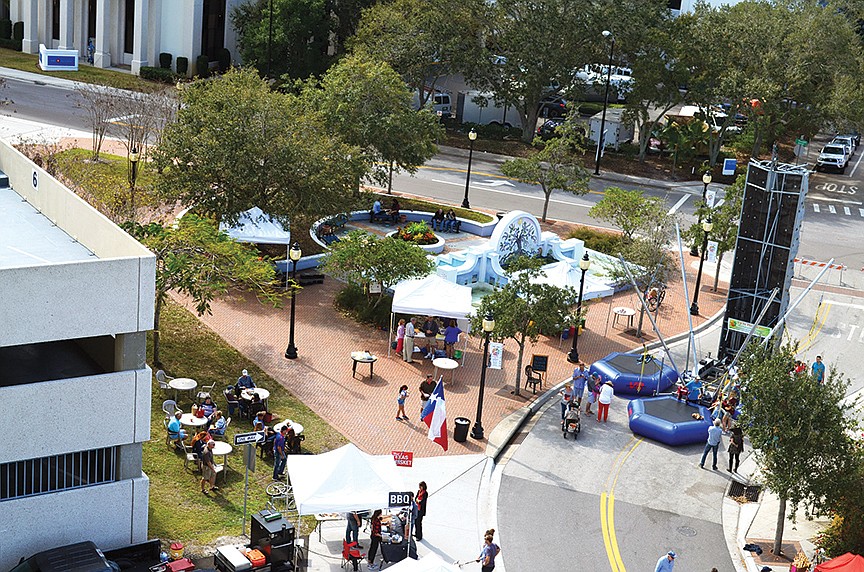- April 16, 2024
-
-
Loading

Loading

Ever since the elections last year of Sarasota city commissioners Liz Alpert and Shelli Freeland Eddie, the City Commission has made some pleasantly surprising decisions.
One of the most recent was its decision to sell a 5,049-square-foot parcel next to the Northern Trust Bank parking garage and Pineapple Park at the intersection of Pineapple and Lemon Avenues. Hembree & Associates paid $260,000 to develop a two-story commercial building on what was city property.
Financially for the city, this was a smart move on two levels. The city will take in $260,000 in cash — not a game-changing amount, mind you, but any chunk of cash is good for a city that has been struggling to balance its budget without dipping into its reserves and deal with more than $125 million in unfunded pension liabilities.
The other benefit is Hembree’s new building will turn a city expense into a revenue-generating property in perpetuity.
What’s more, Hembree’s building will become an asset that will increase in value over time — not just monetarily, but also on the same level that commercial and residential buildings downtown contribute to the city’s quality of life.
Opponents to the sale, of course, wanted the city to keep the property and expand Pineapple Park. This is easy to understand. It’s difficult not to favor more “green space” in urban settings. Parks are often considered as much of an asset to a community as any of its other desirable features.
Unfortunately, proponents of more green space typically want someone else to pay for their parks, e.g. taxpayers. The argument is a park is a public benefit, so it makes sense that everyone should share in the cost.
But you also know this: Think of all of the millions of dollars Sarasota County taxpayers have spent over the years to purchase swaths of rural land for preservation and parks. Or the billions of tax dollars the state has spent on land preservation and parks. Through how many of those parks have you actually strolled or even seen? But you are paying for them.
Likewise, how often have Sarasotans actually used or enjoyed Pineapple Park? Much of what we see at Pineapple Park tend to be gatherings of street people, who discourage citizens from visiting the park.
With Hembree’s development of the 5,000-square-foot parcel, one of the hopes is it will create enough pedestrian traffic and activity that it will help disperse the street people. But who knows?
And even if it did reduce their gatherings, you can still question the utility of Pineapple Park. Here’s another question: Will the city take care of its appearance? One of the park proponents’ complaints is the city doesn’t maintain it to the level they expect.
In hindsight, when the City Commission agreed to sell that small parcel next to the park, it had an opportunity to consider an option that should be applied to every city park: whether to privatize it.
Perhaps it could have sold the park as part of the Hembree deal, with covenants and incentives for the developer to maintain and operate it. Or perhaps it could sell the park to those who wanted the city to keep the Hembree parcel.
In a city where funding park maintenance is a financial challenge, the future of Pineapple Park could be better served in the hands of the private sector.
The idea is not wack-a-doo. It’s spreading around the nation.